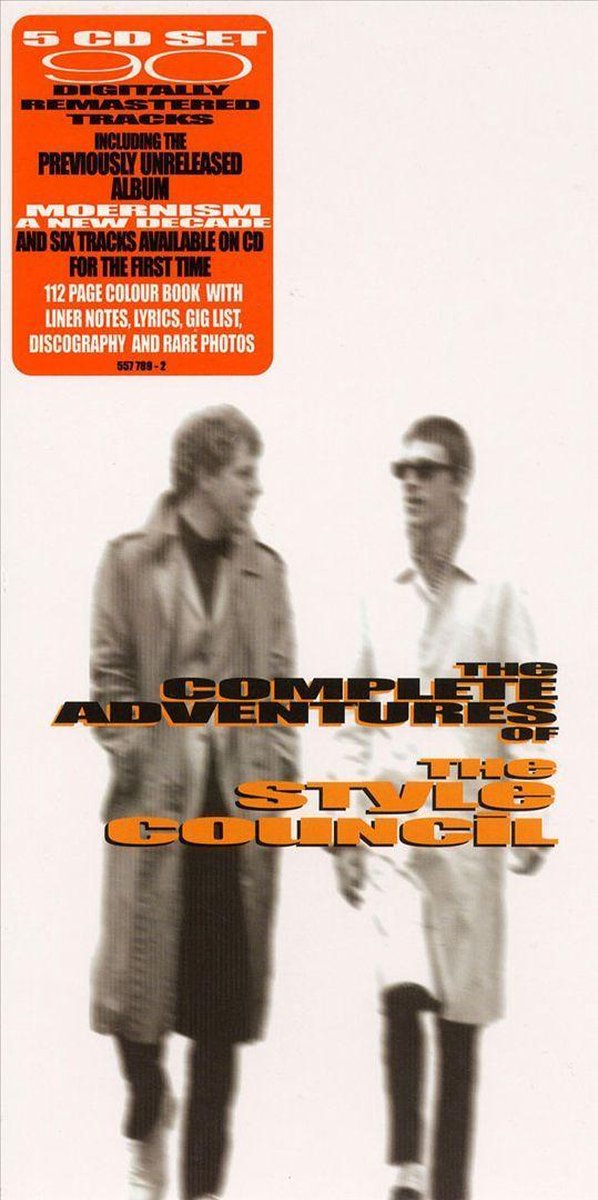

The results were a seven-track mini-LP made for non-UK markets, though it was imported in large numbers. We also have a cracking live album, the mid-period Home & Abroad, and plenty of compilations as well as the definitive 5-CD Box Set, The Complete Adventures of The Style Council, that includes the previously unreleased final album, Modernism: A New Decade from 1989, something most people only heard a decade after it was completed and delivered.įresh from The Jam, Paul Weller began rehearsing with Mick Talbot, drummer Steve White and guest vocalist Tracie Young (the protégée Paul helped launch, she had sung on The Jam’s final single, “Beat Surrender”) and made debut recordings in Paris, summer of 1983 under the name The Style Council, one influenced by the French modernist philosophers of the 20th century. They are prime examples of the uDiscover mantra since discovering them anew is a real pleasure. The big albums – Café Bleu, Our Favourite Shop, The Cost of Loving and the experimental Confessions of a Pop Group were all top twenty or better but while they acquired Gold and Silver status they had something of a connoisseur appeal and Weller was right when he said that people would appreciate them more in years to come. Their best-known singles, “Speak Like a Child”, “Long Hot Summer” and the sublime “My Ever Changing Moods” (a precursor to the styles of Weller’s solo career) kept Jam fans onside and drew in new listeners. Between 19 The Style Council enjoyed enormous success in the UK and Europe and made inroads into the American market.
#The complete adventures of the style council mod
With new partner Mick Talbot (a former member of Dexys Midnight Runners and mod outfit The Merton Parkas) he found the perfect foil, a gifted keyboards player with a penchant for Hammond organ and a sunny disposition. In other words, if he’d felt constrained or frustrated on occasion during his earlier stardom his promise to himself was to make great music. At whatever speed.After Paul Weller parted company with The Jam in 1982 he wasted little time in moving into the deeper soul soundscapes that he wanted to combine with funk and synth-pop while keeping an open mind about the incoming trends: deep house, avant-garde or fusion jazz and even progressive elements of new wave. There’s ragged hollering on ‘Nisei Fight Song’ and the sort of euphoric, ringing guitars on ‘In the Sun’ that Fugazi wouldn’t turn up their noses at.Īn American classic, of sorts. And for all Seam’s sad, gentle turns (of which there are many, not all of them pure genius) they still nurse a punk-rock fire in their collective belly. In fact, the early part of ‘The Pace…’ actually recalls a souped-up Superchunk: loose, warm and happy, if better than average at maths. If there’s anyone likely to climb into the Difficult Music deep freeze and slam the door shut, it is he.īut if some of the songs on this record (‘Kanawha’, ‘Pale Marble Movie’) start off barely there, and gradually coalesce into clear, glassy shapes, there’s no need to reach for ear muffs quite yet the bright surging college rock of songs like ‘Get Higher’ and ‘Intifada Driving School’ proves that Seam haven’t taken to storing their guitars in an ice-locker. At the turn of the decade, guitarist Sooyoung Park was in Bitch Magnet, the Slint that didn’t get remembered.

For Seam have the sort of upstanding Chicago rock pedigree that could well see them get all chilly and isolationist in the autumn of their years. YOU’D BE FORGIVEN FOR BEING a little confused by the title of Seam’s fourth album.


 0 kommentar(er)
0 kommentar(er)
